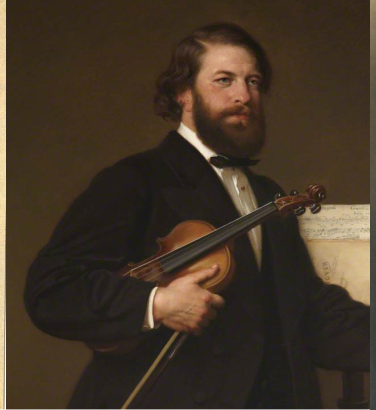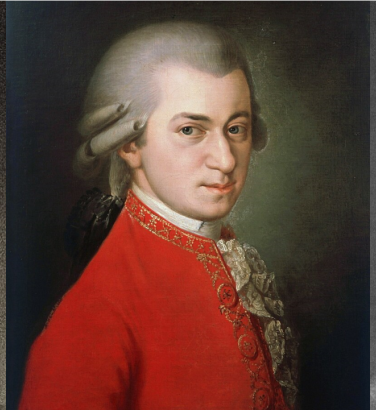
Spanish music by French composers
1 Jul 2024
News Story
The Iberian peninsula lies in a unique position in mainland western Europe, its only non-maritime border being the 270-mile stretch of the Pyrenees. Historically, this meant Spain and Portugal were effectively only accessible by (or with the help of) sailors or mountaineers, but this all changed with the launch of the Spanish rail network in 1848. As in other countries, expansion was swift, and the railway eventually reached the French border (at Hendaye, a coastal town at the western end of the Pyrenees) in 1864.
French composers had not, of course, been entirely immune to Spanish music before this point. There is a decidedly Hispanic inflection to the main theme of Saint-Saëns’ 1863 Introduction and Rondo capriccioso for violin and orchestra, for example, but it was only in 1871 that he adopted a more genuine Spanish idiom in El desdichado (The unhappy man, a vocal duet), written in the style of a bolero. By the time he wrote La jota argonesa
(the jota being a lively dance from Aragon) in 1880, a veritable explosion of Spanish culture was taking place in French musical circles.
To a great extent, this came about thanks to the Spanish violinist and composer Pablo de Sarasate, who had made his home in the French capital after being sent to study at the Paris Conservatoire. (This had happened before the railway had reached the Franco-Spanish border, the journey being possible only thanks to wealthy patrons.) Saint-Saëns’ afore-mentioned Introduction and Rondo capriccioso was written for him, with Lalo’s Symphonie espagnole following in 1875.
If Lalo’s work (a violin concerto in all but name) wore its Spanish influence on its sleeve, it was still missing one key element, namely the clatter of the castanets. A mere month later, Bizet would make up for this in Carmen – performed during the 2024 Edinburgh International Festival, with the SCO in the orchestra pit – but surprisingly, the opera met with mostly negative reviews at its premiere in Paris (mostly down to the title character’s lack of morals), swiftly brushed aside on its 1883 revival. It had gained international acclaim by this point, following performances across Europe and in New York, but Bizet had died only two months after the premiere back in 1875, unaware that Carmen would almost come to define depictions of Spain in the classical sphere and beyond. To name but three examples, the opera would be the basis for the Carmen Fantasy Sarasate wrote in 1883 as a showpiece for himself to play, Rodion Shchedrin’s 1967 ballet Carmen Suite (scored for strings and percussion) and any number of flamenco adaptations by Spanish dance companies.

Célestine Galli-Marié, the first Carmen
Considering the Romantic era’s vogue for literary adaptations, it is perhaps surprising that Carmen (based on a 1845 novella by Prosper Mérimée) is one relatively few Spanish-flavoured ones that came out of France at the time. Cervantes’ Don Quixote must have seemed an obvious candidate, but remained largely untouched (Minkus’ 1869 ballet was unknown outside Russia until the 1920s) until Massenet’s 1910 opera. He had already written a ballet based on the stories of El Cid in 1885, a work best remembered today for its Aragonaise.
Perhaps the purest distillation of Spanish music by a French composer came with Chabrier’s 1883 orchestral work España. The product of a six-month tour of the country undertaken by the composer and his wife in 1882, it would later be held up by Manuel de Falla as a more genuine jota than any written by a Spaniard. Impressively, Chabrier achieves this without even resorting to the castanets.
The fashion for all things Spanish seemed to be waning, however: Debussy’s Iberia (the second of his Images for orchestra) was a late flowering in the first decade of the new century, and there things might have remained had it not been for one Maurice Ravel. Born a mere 11 miles from the Spanish border, to a French father and a Basque mother, to say he embraced the latter’s heritage with gusto would be putting it mildly.
The first of his major works, Rapsodie espagnole, is dated 1907 (when he was in his early 30s), but included an orchestration of the Habanera for two pianos he had written twelve years previously. Although this dance has its origins in Cuba, it had been adopted as part of the wider Spanish musical make-up as far back as Carmen – ‘L’amour est un oiseau rebelle’ in fact marks the title character’s entrance in the drama – and was only one of the Hispanic dances to which Ravel was drawn over the course of his career. Other examples include two pavanes – one for a deceased infanta, one for Sleeping Beauty (in Mother Goose) – as well as his most famous work, 1928’s Boléro.
For all that, he had arguably written his most deliriously Spanish-inflected work, the one-act opera L’heure espagnole, back in 1911. The plot is straight out of French farce, and indeed was based on a 1904 play of the same name: a clockmaker’s wife is so pre-occupied juggling her two frustratingly useless lovers during her husband’s absence that she almost overlooks the decidedly handsome young muleteer who has come by to get his watch repaired. Ravel went to town with its Spanish setting: the music constantly toys with dance rhythms, with the jota, malagueña (a flamenco dance originally from Málaga) and habanera especially prominent.
By this point, Ravel’s fascination with Hispanic culture was the exception rather than the rule, the final hurrah of a surprisingly long-lived fashion. To the south of the Pyrenees, a number of musicians of the same generation were starting to make their own mark in the field of classical Spanish music, and the music of Albéniz, Granados, Falla, Turina and Rodrigo goes far beyond the piquant imitation of 19th century French composers to become a true representation of their native culture.
Related Stories
![A violinist shown at three different ages: as a young man in a drawing, middle-aged in a painting and elderly in an old photo]()
Joseph Joachim and the great German violin concertos
7 April 2025
Beethoven, Mendelssohn, Bruch and Brahms: four violin concertos, all connected by a single violinist.![Three men, the first two in 18th century formal dress (one in black and white, one in a red coat), the last in an old photo, smoking]()
What is a sinfonia concertante?
17 March 2025
We delve into the history of a hybrid genre ...![]()
The SCO Chorus on music for Lent
10 March 2025
With Easter just around the corner, we delve into perhaps the richest (and often darkest) choral repertoire of all ...


